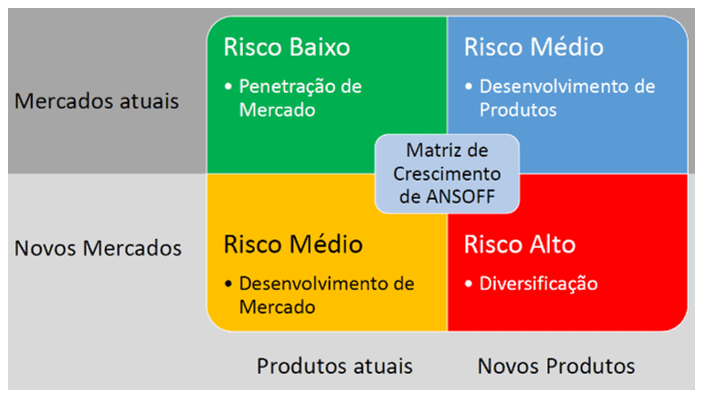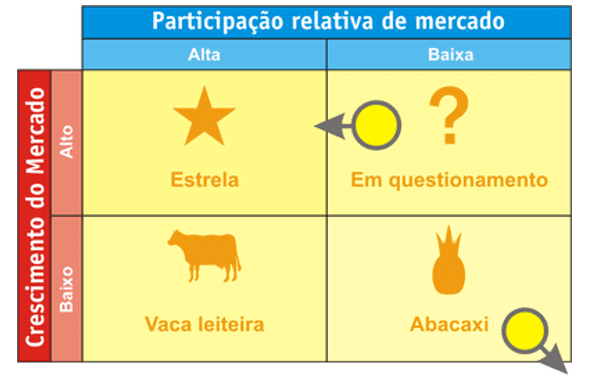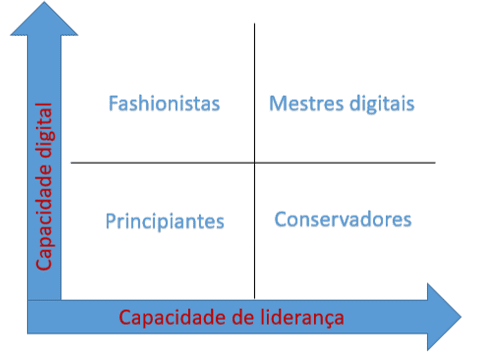ORIGINAL ARTICLE
MARTINS, Geisse [1], OLIVEIRA, Maria Inês Vasconcelos Rodrigues de [2], SANTOS, Tatiana dos [3]
MARTINS, Geisse. OLIVEIRA, Maria Inês Vasconcelos Rodrigues de. SANTOS, Tatiana dos. The mindset of the management of companies of the future: Contemporary digital administration. Revista Científica Multidisciplinar Núcleo do Conhecimento. Year 05, Ed. 11, Vol. 21, pp. 05-15. November 2020. ISSN: 2448-0959, Access link: https://www.nucleodoconhecimento.com.br/business-administration/digital-administration
SUMMARY
This work aims to reflect on administration and management in the digital age. A real and one that cannot be kicked back is that companies are facing a large number of changes that require administrators, managers or leaders, skills in dealing with digital-related issues and not only and merely technical skills of classical or traditional administration. As these changes are structural, some of a social, economic, political, and technologically emphasized, tend to influence not only the decisions, but the entire ecology of companies. If in the past close to attention, the planning and decisions of the executives of the companies were centered on specific points, already matrixed and supported by classical theories, whose applications were successful, now, these matrices can no longer account for this new technological revolution. Other elements appear in the administrators dashboard that has the future as a starting point for their organizations. The mindset of future companies is composed of a mosaic of new elements and has its own dynamic, shapeform, fluid and highly changing. Seeking to understand all these scenarios and as the view of authors who deal with the theme, this article intends to answer questions that are presented and that need a more targeted analysis, besides bringing a reflection and analysis on this theme that is presented in contemporary times.
Keywords: administration, technologies, mindset, decision, future company.
1. INTRODUCTION
The universe of organizations has been undergoing structural transformations for decades. What is known by waves or world phenomena has somehow impacted deeply within organizations and in their ways of administering. The latest wave, known as the wave of information and knowledge technology since the 1970s, has been driving new ways of managing and managing organizations.
If, in the past raw materials, stocks, people and a consumer market eager for products, were considered the mainstay so that organizations and their ways of managing could ensure survival and some certainty of the future, today, no longer. Leading in the digital age requires a radical change in the face of these, already obsolete, concepts of a still recent past in which the science of administration relied on previous concepts, such as social and human capital, capital goods, among others and that somehow guaranteed longevity with some comfort.
With the advent of new information technologies and also knowledge, developing a digital vision of companies requires management executives a certain contortionism so that they can, according to their planning, aim at the goals of organizations. These increasingly have narrowed use of resources with the extension of the reinvention of their business plans, as well as the need to be aligned with market prospects while having to deal with new demands from their customers.
Driving the transformation from analog to digital, developing technological leadership capabilities, reinventing business models, managing distransformation and managing knowledge are skills now embedded in the dashboard[4] of future business administrators.
But is it what comes to be a company of the future? Traditional companies are valued for the products they produce, for example, a company that exploits and produces oil is active, among other things, the amount of oil already processed it produces and can sell. The asset of a soft drink producing company, in turn, is how much it is manufactured, sold and its expertise in logistics, already in a mining company, how much is extracted in minerals. With the advent of information technology and knowledge, companies of the future emerged. They have their assets in intangible things, for example, the giant Google is worth how much information it can process and mine[5], that is, what has value in a technology company like Google is its ability to deal with the gigantic mountain of data and the people (collaborators) who know how to mine that information, turning it into value for its customers and the world. In the same direction and direction Microsoft, Apple, and Amazon do not have tangible goods for marketing, but rather data and processed information that may represent market value. To get an idea of the value of this capital, according to Emerson Alecrim (2020), Apple’s market value in 2020 is US$1.5 trillion, which corresponds to the GDP of a country like Brazil.
In view of this scenario, in the last 10 years, there has been a radical change in the business environment, numerous scenarios (economic and historical) presented themselves to the managers and leaders of organizations. The new webs of the already complex competitiveness are increasingly intertwined by social, political and cultural factors. In addition, there is the innovation that presents itself with a multitude of facets and dimensions not yet fully discovered. It is understood here that innovation is not only limited to the creation or expansion of new markets, but in other ways of serving and satiling markets, especially markets in which technology and knowledge are now the fuel of all this new gear.
In fact, some questions are presented in this context: What challenges and actions can the organization or institution take to maximize its results and minimize impacts in the face of an changing environment? What is the role of management in this process? In view of these questions, this article tries to understand and answer these questions through bibliographical analysis that deals with the subject and that may bring light to the questions.
2. TECHNOLOGY: ADAPT OR NOT?
Let’s cut to the point. Technology is the focal point of the moment. With absolute certainty there are other world events going on, from interesting discoveries, shared economy, new professions and new products. Changes in micro and macroeconomic factors, social factors and, also going through the COVID-19 pandemic, caused by the Sars-CoV-2 virus. For organizations, this radical change in processes has caused considerable changes in internal and external processes, which requires administrators, managers and leaders much more than just technical knowledge about classical or traditional administration to face the challenges proposed today.
Almost as if in a prophecy Druker (1968 p. 57) stated:
First of all, company men will have to learn to understand the dynamics of technology and predict the direction and speed of technological change. When the new technology was created by the isolated inventor who worked outside the economy, there was no need for this understanding. If, however, a functioning economy wants to be able to promote innovation and rapid change, your business man will need to predict technology and take advantage of the opportunities offered by technological developments.
2.1 A PAST NOT SO FAR: ANSOFF MATRIX AND BCG MATRIX
To try to understand, at least part of what is happening, it is necessary a certain tour. In the near future, the scenarios presented by the market, as a rule, were as a game of chess, in which the unknowns were focused largely on the administration of raw materials, stocks, people, the markets and their consumers. The competitive advantage had as an axial point to make and deliver something new that could be understood as perceived value to satisfy the desires of consumers. Still in this context, a good business plan that could strategically position the company in a matrix, as Ansoff (1990) determined, was fundamental.
Figure 1 – Ansoff Matrix

Or, as proposed by Kaplan and Norton (1992), using another matrix, called BCG, and according to the creator Daniel Castelo (VALUE BASED MANAGEMENT.NET, 2019), for a traditional company to have the expected success, it is necessary to have a product portfolio with different growth rates and different market shares. According to Castelo (VALUE BASED MANAGEMENT.NET, 2019) the composition of this portfolio is intrinsically a function of balancing cash flows. High-growth products or services require oxygenation with capital (money) to grow effectively. Low-growth products and services should, whenever possible, generate excess cash or at least a good liquidity cushion. In short, both are fundamentally necessary and are grouped simultaneously.
Figure 2 – BCG Matrix

Disregarding the advantages and disadvantages of the application of these matrices, it is certain that technology and its lancing dynamics represent a fickle variable in this equation. Moreover, not even Ansoff or Castelo have delved into technology as an impact point in these scenarios. Nor did The Balanced Scorecard[6] have the pretense or ability to accurately predict the certainty of uncertainties.
Fact is, when information and knowledge technologies are established, all that was proposed becomes innocuous, because many of the times such methodologies or management tools are not adherent to what one has to manage in a company of the future.
2.2 ADMINISTRATION IN FUTURE COMPANIES
A good example of this is the administration of production costs in industry 4.0[7], which uses robotics and artificial intelligence; logistics systems that rely on algorithms and are based on the concepts of Just In Time; the intellectual capital of these companies (they have a very high turnover or as it is called the renewal of ideas) that are part of Knowledge Management and which have as a backbone not only attract new talents, but also retain knowledge and disseminate throughout the organization and even to the community in its surroundings. Most companies need to adhere to what is called, shared economy (the roles of competitors and partners are now confused with the company and align with strategic planning), tele work is no longer a vision of the future, is a constant in a large number of companies that understand that it is not stationary work station that generates value or that achieves the expected results of assertiveness efficiency and effectiveness of employees. In summary, it can be affirmed that digital brought new ways of doing what was done before and with diametrically opposite results in relation to what was seen or perceived in the past.
It harmonizes with this rationale, the considerations of Westman, Bonnet and McAfee “The technological wave has been built for a long time, but has gained a much faster pace in recent years” (2016, p. 15). Still in the view of these authors, in the book entitled Liderando na Era Digital (2016), there are four levels of digital mastery
Figure 3 – Four levels of Digital Mastery

At this point, it is important to emphasize that given what the world goes through in the current conjuncture, such as what happens during the pandemic of covid-19, and the future of post-pandemic uncertainties, nothing is as certain as the uncertainty. The reality of traditional or analogue companies has changed, similar to the characteristics of future companies, some of which are listed below:
- Remote work: it is certain that remote work has been configured as a viable and necessary alternative in view of social distancing and, now, it has been proven that it is not a fixed locus of a collaborator that determines their productivity. Reducing fixed rental, space and job costs has already established a first priority, with Home Office or Coworking this priority in reducing cost is established as the first order.
- Internet as a means and not as an end: it is now known that the internet is a powerful medium and organizations need to rethink its usefulness and applicability. It should be included in investment and research planning so that companies appropriate their potential for use as a competitive advantage. E-commerce (B2B and B2C) are not only chimeras and need to be part of the strategy and also of the marketing plan.
- Everything in the Cloud: It has been quickly learned that platforms (software, programs, spreadsheets, and the like), which were previously stored on fixed workstations, are now being shared and saved in the cloud or are in the process of migrating to digital. In order to ensure scalability, while allowing greater dissemination and market capillarity in various places of the planet, cloud computing is more than a trend, for many businesses and companies is a matter of survival in the medium and long term.
- Being digital matters: future organizations need to adapt to new forms of working relationships especially in which algorithm and artificial intelligence are actionable and contribute to decision-making.
- Industry Mindset 4.0: adapt to the new concepts of an industry based on technology and organizational ecological awareness, focused on sustainable use of resources and the promotion of collective well-being in which this organization is installed.
- Knowledge management: foster research and development of talents and knowledge produced by the organization in such a way as to promote people, communities and also stakeholders. Determine that Knowledge Management is an integral part of short, medium and long-term strategic planning, converting intellectual capital into products, goods and services that can be valued throughout the dimension of the organization and with the recognition of society. A worrying point regarding knowledge management is the attention to the non-precariouswork developed by employees, as well as the total attention to avoid the alienation of employees or dismay with the organizational culture.
- Leadership and innovation capacity: to foster projects that can be quickly incorporated as technological innovation in the processes in order to leverage the leadership capacity of the organization, optimizing the processes, with the possibility of reducing costs and low environmental impacts, promoting leadership capacity.
- Electronic or cyber law: Now even judicial issues are computerized. Right-hand operators need to know computer programming, cybernetics, and related issues. Justice is computerized and monitors current social transformations regarding Information and Knowledge Technologies (ICT). Actions and discussion in the field of law related to algorithmic subordination, shared economy, copyright, digital actions, virtual audiences (synchronous or asynchronous) are a reality within companies. Compliance is increasingly moving towards digital.
- Digital Marketing: Companies know and are still learning that it’s not enough to just have fixed points of sale. The traditional counter is not enough. Social networks, websites, blogs and everything the internet offers as a sales channel has to be exploited to the fullest to boost the selling force.
- Companies that learn: Organizations that have a planning of their intellectual capital and that somehow manage knowledge in their internal structures, consolidate a greater advantage as they foster research and development supported by on the knowledge that is generated and applied in the production of innovative goods and services.
Therefore, the challenge of administrators, managers or leaders today differs and much from the old one that was based on bureaucracy as a source of competitive advantage. A new organizational ecology needs to be a constant in the practices of contemporary administration. As Silva, Santos and Macedo (2019, p. 150) explain: “In a view, organizational ecology is based on the premise that, as in nature, organizations undergo an intense environmental selection, which generates a situation of high competitiveness and the need for flexibility of internal structures and processes.”
In the same line of understanding, a preponderant factor is the issues related to the management of people within this new universe. One of the edges of this intricate prism is that of managing human capital. More and more people represent what is most valuable within organizations. They are people who can be disruptive, who can innovate and create imbalances that can bring value to organizations.
3. CONCLUSION
The direction of business is digital, that’s a fact. But after all, what is the role of management in this process? Understanding how to manage or manage all this intricate puzzle is the challenge for administrators, managers, or leaders of business organizations.
Everything points out that information or knowledge technologies when they are not the founding structures are the means for business to exist. In one way or another, the power of digital technology in the processes of companies at this point in history is undeniable. Countless sectors of the economy are already in the digital age and others are in the process of migration, which requires from the executives of organizations much more than just the traditional concepts of administration. New businesses require an ability to quickly learn to understand the scenarios placed and to make decisions that have structural impacts in the medium and long term.
Thinking and acting in disruptive ways is the mindset of contemporary administration. Being able to adapt organizations in situations of constant change and application of technology as a fundamental part within organizations, such as electronics, telecommunications, robotics and even artificial intelligence, to embody decisions, all this added up is now a reality that cannot be rewinded.
Manage with scarcity of resources, highly volatile markets, consumers with still indefinable demands, and eager for products not yet invented; manage geospatially dispersed production chains, with multiculturals involved; in addition to dealing with economic, social and political issues that have a direct impact on planning, it is a constant truth in the lives of executives. Nevertheless, the reality increasingly demands that executives conduct companies to a new ecology, in which what in the past was unnoticed or even neglected is now part of the attention and decision of the administrators, managers and leaders of contemporary organizations.
In fact, there is also the management of intellectual capital within organizations that now have immense value and represent, in fact, what can create distransformation and can innovate in the face of this entire digital universe that is imposed on organizations.
The cornerstone of a digital transformation is the ability to respond with agility, efficiency and effectiveness in the face of such change and impact inside and outside organizations that want to position themselves strategically and have a competitive advantage now and in the future.
But what is the role of management in this process? For administrators who are now in the digital age a statement: adapting presents itself so far as the best possible answer.
REFERENCES
ALECRIM, Emerson. Apple é a 1ª empresa dos EUA com valor de mercado de US$ 1,5 tri. Tecnoblog, 10 jun. 2010. Disponível em: https://tecnoblog.net/345057/apple-acoes-valor-mercado-1-5-trilhao-dolares/. Acesso em: 10/09/2020.
ANSOFF, H. Igor. A nova estratégia empresarial. São Paulo: Atlas, 1990.
BCG Model. Value Based Management.net, c2019. Disponível em: https://www.valuebasedmanagement.net/methods_bcgmatrix.html. Acesso em: 10/09/2020.
DRUCKER, Peter Ferdinand. Uma era de descontinuidade. São Paulo: Zahar Editores, 1969.
KAPLAN, Robert Samuel; NORTON, David P. A estratégia em ação: balanced scorecard. Tradução de Luiz Euclydez Trindade Franzão Filho. 19. ed. Rio de Janeiro: Campus, 1997.
KAPLAN, Robert Samuel; NORTON, David P. The Balanced Scorecard – Measures that drive performance. Harvard Business Review 70, Boston, n. 1, Jan./Feb., 1992.
MEGGINSON, Leon C. Lessons from Europe for American Business. Southwestern Social Science Quarterly, v. 44, n. 1, p. 3-13, 1963.
RABELO, Arnaldo. Matriz BCG, do Boston Consulting Group. Filtros de água. Wikimedia Commons, 26 ago. 2006. Disponível em: https://commons.wikimedia.org/wiki/File:Matriz_BCG.png. Acesso em: 10/09/2020.
SILVA, Mara Rosalia Ribeiro; SANTOS, Ana Sara Leite; MACEDO, Augusto Cezar Moura. Inovação, Sobrevivência e Ecologia Organizacional: Possibilidades de Relação. Revista Administração em Diálogo – RAD, v. 21, n. 2, p. 148-163, 2019.
WESTERMAN, George; BONNET, Didier; McAFFE, Andrew. Liderando na era digital. São Paulo: Makron Books, 2016
APPENDIX – FOOTNOTE REFERENCES
4. Dashboard is a dashboard, a visual presentation that contains key business information. This information is presented by metrics, data that can be easily visualized and manipulated in order to achieve one or more business objectives.
5. Datamining is a common term in future companies and means mining data. People are connected by a large network, the internet, and their behaviors can be mapped and even predicted, this behavioral analysis is performed from what people report on their networks and searches in search browsers as well as behaviors related to purchases and subjects of interest.
6. This management tool, called Balanced Scorecard, was developed by Robert Kaplan and David Norton. “‘Balanced Scorecard’, organized around four distinct perspectives – financial, customer, internal and innovation and learning. The name reflected the balance between short- and long-term objectives, between financial and non-financial measures, between trend indicators (leading) and lagging and between the internal and external performance perspectives.” (1997, p. VIII, author’s griffin).
7. Industry 4.0 can be understood as an innovative way to transform goods and services. This new industry converges machines considered intelligent (using robotics and artificial intelligence), associating them with high complexity computational analysis and collaborative work with hyperconnected people. This industry seeks efficiency in all stages of production with a focus on cost reduction and total management of the production chain, with an emphasis on extreme care with logistics that is fully integrated with the concepts of Just In Time, as well as a total zeal for the environment and the communities involved. It has, as a rule, a highly digitally connected industrial plant, integrated with automation processes and in full harmony with concepts of decentralization of production processes. A characteristic of Industry 4.0 is its synergy with all stakeholders and its capillarity and connection with its consumer market.
[1] Master’s degree in Emerging Technologies in Education from Miami University of Science and Technology (MUST). Specialist in Neurosciences and Learning, Psychopedagogy, School Coordination/Supervision, School Inspection with emphasis on Inclusive Special Education, Business Pedagogy, MBA in Strategic Management. Graduated in Pedagogy and Telecommunications.
[2] Graduated in Law from UFMG and Post graduation in Business Law from PUC MINAS. Master’s degree in Emerging Technologies in Education from Miami University of Science and Technology.
[3] Guidance counselor.
Submitted: November, 2020.
Approved: November, 2020.














